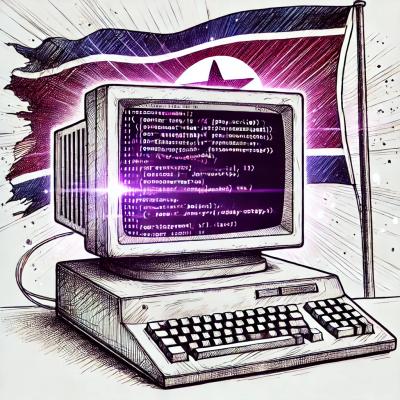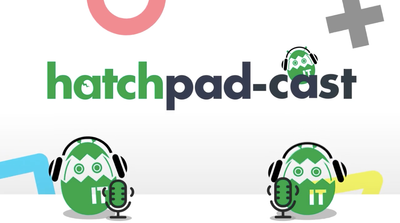
Security News
TypeScript is Porting Its Compiler to Go for 10x Faster Builds
TypeScript is porting its compiler to Go, delivering 10x faster builds, lower memory usage, and improved editor performance for a smoother developer experience.
@lansforsakringar/components
Advanced tools
**Legacy but still very much in use**. A few links in the documentation are unfortunately broken and should be updated.
Legacy but still very much in use. A few links in the documentation are unfortunately broken and should be updated.
Accessible and feature rich front-end framework for Länsförsäkringar web development.
npm install @lansforsakringar/components
You have two alternatives for getting started with the framework; either by importing the source files into a SCSS build, or by adding the precompiled files to your HTML document.
Importing the source code gives you access to the full SCSS suit including our variables and mixins – increasing your flexibility when extending the framework with your own styles and layouts.
Import index.scss at the very beginning of your main SCSS file:
@import '@lansforsakringar/components/src/scss/index.scss';
The JavaScript bundle can be imported as a whole.
import '@lansforsakringar/components'
Some components are also exported, both as part of the bundle as well as individual modules.
// Extract from bundle
import { select } from '@lansforsakringar/components'
// Import only the specific component
import select from '@lansforsakringar/components/select'
In the /dist folder provided, you will find: the lfui directory which includes compiled CSS and Javascript packages in ESM and UMD formats. There is also the fonts directory containing all font faces. They are referenced by relative paths in the compiled CSS. All these files can be used as-is.
<script type="module" src="/public/lfui/main.es.js"></script>
<style rel="stylesheet" href="/public/lfui/style.css">
When importing and compiling the source code, all dependencies are resolved automatically by your build tool. However, please be adviced that when including the compiled files, if you are using the ranged Slider interval variant, you will have to ensure that jQuery is loaded and available in the global scope.
Web fonts are included as an external dependency, so if you are not copying the dist/lfui directory as-is, the font urls will need to be rebased and the source files copied to the build directory. A tool like postcss-url can help you with that.
See the fonts documentation on loading and preloading techniques for optimal performance and accessibility.
Icons are not part of this package. Please see the Länsförsäkringar Icons for documentation on how to install and use.
See the designated Länsförsäkringar Favicon repo for all the assets and documentation you might need.
Each component is documented, with examples, on the LFDS website. This is our go-to for documentation.
Along with that, because our code is based on Bootstrap, the documentation from Bootstrap version four and five does provide a good overview of how components are structured, along with listing all the available utility classes.
If you with to report a bug or submit a feature request, feel free to open an issue. The more information that you provide, the better.
We rely on Storybook for serving and testing during development.
After cloning this repo, install the dependencies and start the server.
npm install
npm start
Along with starting Storybook, npm start will also rebuild and refresh the page as you work, allowing for quick changes and previews.
.
├── .storybook # Storybook config
├── dist
│ ├── docs # Component examples used in LFDS
│ └── lfui # Component examples used in LFDS
│ ├── style.css # CSS bundle
│ ├── main.es.js # ESM bundle
│ ├── main.umd.js # UMD bundle
│ └── fonts # Font files (referenced in CSS bundle)
└── src
├── data
├── docs
│ ├── *
│ │ ├── *.html # HTML example
│ │ │── *.js # JS used only for the example markup
│ │ └── *.stories.js # Storybook config
│ │ ...
│ └── index.js # Exporting JS/CSS that's needed for examples in LFDS
├── js
│ │── index.js # Entry point for JS (sans CSS)
│ └── components # Component JS
├── scss # CSS for components
│ └── index.scss # Entry point for SCSS
└── index.js # Entry point for JS/CSS bundles
The latest and stable version is always in the main branch. New features and patches are then added through dedicated branches and pull requests.
When working on a new feature, begin by creating a new branch from main. After finishing your work, squash merge main into your branch and then create a pull request.
Please document the changes that you make in the pull request, along with potential changes to existing classes or variables that should be added to a migration guide later on.
The project uses standard and stylelint. There are no automated tests beyond that.
npm test
Playwright is used for our visual testing of components.
To run the tests use npm run visual:test, it's also possible to only test component that contain a specific name like npm run visual:test button.
Use npm run visual:update to update the base line images.
Use npm run visual:report to open up the report.
componentStatus.json)[src/data/componentsStatus.json] with changes that have been made to the respective components in this release. This information will be visible on LFDS later on.npm version <major|minor|patch>package.json in the LFDS repo.When creating a release, a Github Action will automatically deploy the changes to our Storybook Github page.
Since the package depends on private GitHub packages, a private access token is set up to authenticate the GitHub actions. The PACKAGE_TOKEN secret needs to
be updated when expired.
FAQs
**Legacy but still very much in use**. A few links in the documentation are unfortunately broken and should be updated.
The npm package @lansforsakringar/components receives a total of 273 weekly downloads. As such, @lansforsakringar/components popularity was classified as not popular.
We found that @lansforsakringar/components demonstrated a healthy version release cadence and project activity because the last version was released less than a year ago. It has 0 open source maintainers collaborating on the project.
Did you know?

Socket for GitHub automatically highlights issues in each pull request and monitors the health of all your open source dependencies. Discover the contents of your packages and block harmful activity before you install or update your dependencies.

Security News
TypeScript is porting its compiler to Go, delivering 10x faster builds, lower memory usage, and improved editor performance for a smoother developer experience.

Research
Security News
The Socket Research Team has discovered six new malicious npm packages linked to North Korea’s Lazarus Group, designed to steal credentials and deploy backdoors.

Security News
Socket CEO Feross Aboukhadijeh discusses the open web, open source security, and how Socket tackles software supply chain attacks on The Pair Program podcast.